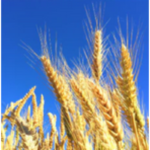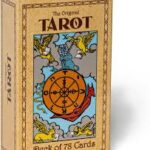Puzzles are more than just entertainment; they can be beautiful works of art, especially when you create your own using meaningful images. One of the most popular themes for custom puzzles is nature, with floral imagery at the forefront of this trend. With their vibrant colors, diverse shapes, and natural beauty, flowers make for captivating puzzle subjects. If you want to turn your own flower photography into a puzzle, the square format is an excellent choice. Square crafting images allow for balanced compositions that can turn simple photos into intricate and visually stunning puzzles. In this blog, we will share tips on how to create beautiful flower puzzle pictures using square-format flower images, from choosing the right flowers to incorporating the puzzle into your home décor once it’s completed.
Why Choose Flower Images for Puzzles?
Flowers have long been a source of artistic inspiration due to their natural beauty, vibrant colors, and variety of forms. When used in puzzles, flower images provide aesthetic appeal, challenging patterns, and symbolic meaning. The intricate shapes and repeating elements of floral patterns, such as petals’ curves and color gradients, make puzzles feel like true works of art. Each flower has its own symbolism, from purity to passion, adding an emotional layer to the puzzle experience.
Tips for Creating Stunning Flower Puzzles
Once you’ve selected your flower images, there are several ways to ensure that your final puzzle design is both beautiful and enjoyable to put together.
The composition of your photo is crucial to how well it translates into a puzzle. Here’s how you can enhance the composition of your square crafting images:
Center Your Subject: The square format naturally draws the eye to the center, making it the perfect choice for showcasing a single flower or focal point. Position the main flower in the center of the image for a balanced look.
Use the Rule of Thirds: Even in a square format, dividing your image into a grid and placing the key elements (such as flowers or leaves) at the intersections of the lines can create a dynamic composition.
Add Negative Space: Including empty space in the image, such as a clear sky or blurred background, gives the puzzle builder a mental break and makes the flower stand out even more.
Enhance Colors and Contrast
For puzzles, high-contrast images are easier to work with. Consider enhancing the colors and contrast of your flower photo before turning it into a puzzle. This can help make the puzzle more vibrant and distinguishable. Even a subtle increase in contrast can make a difference in how the pieces fit together and how engaging the puzzle is to solve.
Saturation: Boosting the saturation of the image’s colors makes each piece more distinct, especially if your flower has multiple color variations.
Lighting: Adjust the lighting in your image to ensure that shadows and highlights are clear. This creates more variation between the puzzle pieces, making it easier to assemble.
Crafting Your Picture Puzzle
After selecting and editing your images, the next step is to bring your puzzle to life. Several online platforms allow you to upload your images and customize a puzzle to your preferred size and difficulty level.
Puzzle Piece Size: If you’re planning to display the puzzle as art, consider opting for larger puzzle pieces. These make the image clearer once assembled and easier to hang.
Puzzle Piece Count: For a casual challenge, a puzzle with 250–500 pieces is ideal. For a more intricate puzzle experience, consider a 1,000-piece puzzle, which allows for greater detail in the image.
Custom Shapes: Some puzzle makers allow for custom-shaped pieces, which can add an additional layer of uniqueness to your flower puzzle.
Displaying Your Finished Puzzle Picture
Once you’ve completed your custom flower puzzle picture, you’ll likely want to display it as artwork. Here’s how to do it in style:
Framing the Puzzle: Choose a frame that complements the colors in the flower image. For example, a simple white or black frame works well with bold, colorful blooms. Alternatively, a wooden frame adds warmth and a natural touch, especially for images featuring earth-toned flowers.
Puzzle Display Boards: Display your puzzle on a magnetic board or floating shelf where you can easily switch between puzzles. This way, you can enjoy multiple puzzles over time without committing to a permanent display.
Gallery Wall: If you’ve created several flower puzzles, consider creating a gallery wall featuring multiple framed puzzles. You can arrange them in a grid or stagger them at different heights for an eclectic look.
Creating beautiful flower puzzles with square photos offers a perfect blend of nature’s beauty and the joy of solving a puzzle. Whether you’re using vibrant roses, cheerful sunflowers, or elegant tulips, the process of turning your floral images into a puzzle allows you to capture and display moments of beauty in a creative and engaging way.
By focusing on the composition, enhancing colors, and selecting the right puzzle format, you can create a stunning piece of puzzle art that’s not only a joy to assemble but also a beautiful addition to your home décor. Let the natural beauty of flowers bring your custom puzzle to life and give you an opportunity to celebrate both art and nature in a fun, interactive way.




